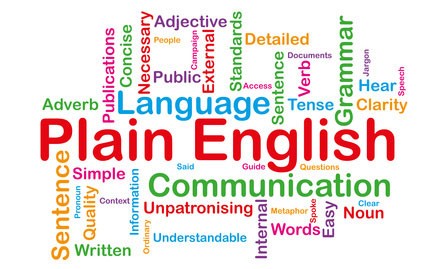Can you speak the language of management? If not, here’s what you’re missing:
· The ability to add value in financial discussions with your boss and other top managers
· The skills needed to get your latest brainstorms adopted by key financial decision makers
· A plethora of financial tools that can help you make better business decisions
· An understanding of how your company’s financial performance affects its most critical asset: the workforce
In just 90 minutes, you’ll gain a new skill set¾and a potential ticket to the management table
Before you take a seat at the management table, you’d better have a solid understanding of key financial terms and accounting concepts. If not, you won’t be able to converse with those seated around you, because finance is the only language they speak.
Overcome the financial language barrier — for good — by attending this audio seminar. Using an easy-to-follow format, James Cole will demystify financial terminology, translate the accounting jargon and illustrate how communicators use financial information to increase their effectiveness.
Don’t miss this vital training event, designed to give you the skills and knowledge you need for holding your own with those who hold the company’s purse strings.
Key learning objectives:
· What’s at stake: Why every communicator should have a solid understanding of finance
· How a balance sheet, income statement and cash flow statement are used to analyze a company’s performance
· What management accounting tools CEOs use to monitor a company’s fiscal health, including EBITDA and pro-forma earnings
· How to cut through the jargon to translate complex financial data into meaningful and useful concepts
· Which financial terms are “must haves” for boosting your business vocabulary, including expenses, assets, capitalization, cash, accrual transactions and many more!
Audio Seminar Bonus: Understand the basics of financial decision-making
James answers real-life questions on:
- What communicators can do to help their organization’s employees better understand how their business works, with the objective of improving performance
- Tips to better communicate financial concepts to a lay audience
- Learning from the mistakes made by Enron
- The best tools to measure financial performance
Your audio seminar leader
James Cole is director of development for the Masonic Home of Virginia. His 25 years of professional experience include roles as auditor, founder, officer and consultant with numerous organizations throughout the U.S. He regularly speaks on such topics as financial reporting, taxes, accounting, fundraising and board development. He was a featured speaker at IABC’s 2005 International Conference in Washington, D.C., and Financial Communication Conference in New York.
Can you prove the value of your communication, marketing and PR programs? It’s a simple question, and your bosses rightfully expect concrete answers. How you respond affects the objectives you set, the programs you embark on and ultimately your career success.
Join “Unleashing the Power of PR” author and PRIME Research CEO, Mark Weiner, and SVP of BurrellesLuce, Johna Burke, as they walk you through the current communication measurement landscape in a way that makes new sense. Moderated by award winning journalist, communicator and president of Communitelligence, John Gerstner, Mark and Johna will answer — and sometimes debate — the most important and challenging questions every communication professional needs to know to prove the value of their internal and external communication programs.
This won’t just be a 5,000-foot fly-by of the topic. You’ll gain practical takeaways and actionable advice. Don’t miss this special webinar designed to amp up your skills in measuring PR programs and proving your worth. Did we mention this stuff is critical to your career?
Audio Excerpt
Some of the questions that will be answered:
- What kind of metrics should PR people be measuring?
- Why are clear, concise terminology and metrics so important when executing a public relations research and evaluation system?
- How can research be used to set better objectives
- What are the Barcelona Principles and what do they mean to me?
- How does research and measurement help to guide business decision-making?
- How can research and be used to avoid catastrophe?
- How do you foster a culture for communications research within the team? Among executive leadership?
- How do conduct research and measurement with little or no budget?
- What’s the difference between qualitative and quantitative research? How do you know which to use and when?
- What’s critical to know about measuring social media programs?
Presented by:
 Mark Weiner is the CEO of PRIME Research in North America. PRIME Research is one of the world’s largest public relations and corporate communications research and consulting providers with offices in Western Europe, North and South America, Eastern Europe and the Far East. Since 1993, Mark has devoted his career to helping many of the world’s most respected organizations and brands to demonstrate and generate a positive return on their investment in corporate and brand communications. He is the author of “Unleashing the Power of PR: A Contrarian’s Guide to Marketing and Communication” published by John Wiley & Sons. Weiner is a member of the PRSA, IABC and the Institute for Public Relations for whom he served as Trustee and Chairman of the Research and Measurement Commission. He is an editorial advisory board member of PRSA’s Strategist and PR News. A frequent provider of provocative public relations content, Weiner is a recurring conference speaker at international and domestic events, and a prolific author, having published more than one hundred articles.
Mark Weiner is the CEO of PRIME Research in North America. PRIME Research is one of the world’s largest public relations and corporate communications research and consulting providers with offices in Western Europe, North and South America, Eastern Europe and the Far East. Since 1993, Mark has devoted his career to helping many of the world’s most respected organizations and brands to demonstrate and generate a positive return on their investment in corporate and brand communications. He is the author of “Unleashing the Power of PR: A Contrarian’s Guide to Marketing and Communication” published by John Wiley & Sons. Weiner is a member of the PRSA, IABC and the Institute for Public Relations for whom he served as Trustee and Chairman of the Research and Measurement Commission. He is an editorial advisory board member of PRSA’s Strategist and PR News. A frequent provider of provocative public relations content, Weiner is a recurring conference speaker at international and domestic events, and a prolific author, having published more than one hundred articles.
 Johna Burke has 23 years experience working both as a public relations practitioner and a provider of services that are vital to the successful performance of communications professionals. For 11 years, starting in 1989, she was associated with U-Haul International, ultimately becoming head of public and investor relations. Ms. Burke joined BurrellesLuce, in its Phoenix office, in 2000. She served as West Coast regional vice president, a corporate vice president in 2008 and October 2009, was appointed senior vice president-marketing. Ms. Burke is a highly rated speaker who is often invited to talk about best practices in media relations and monitoring, including the measurement of PR effectiveness; her written views have appeared in a variety of PR industry outlets and she is a regular contributor to Fresh Ideas, the incisive blog produced by BurrellesLuce. Ms. Burke is immediate past chair of the Southern Region of the International Association of Business Communicators and current chair of its Nominations Committee.
Johna Burke has 23 years experience working both as a public relations practitioner and a provider of services that are vital to the successful performance of communications professionals. For 11 years, starting in 1989, she was associated with U-Haul International, ultimately becoming head of public and investor relations. Ms. Burke joined BurrellesLuce, in its Phoenix office, in 2000. She served as West Coast regional vice president, a corporate vice president in 2008 and October 2009, was appointed senior vice president-marketing. Ms. Burke is a highly rated speaker who is often invited to talk about best practices in media relations and monitoring, including the measurement of PR effectiveness; her written views have appeared in a variety of PR industry outlets and she is a regular contributor to Fresh Ideas, the incisive blog produced by BurrellesLuce. Ms. Burke is immediate past chair of the Southern Region of the International Association of Business Communicators and current chair of its Nominations Committee.
PR & Marketing Is Changing – Are You? Online PR provides the means to reach target audiences directly, with or without participation of the news media. Internet marketers have been doing that for years, but public relations professionals have been slow to get on board. No PR professional can afford to ignore online PR or outsource it to specialists; it is an essential part of the skill set all PR professionals must have. It’s as fundamental as writing, pitching and building relationships.
So, what must you know to thrive in this ever-changing online environment? If you’re like most public relations pros, you need a broader knowledgebase, greater online skills – and perhaps, a new mindset. PR pros are doing a better job with social media than keyword research and SEO, which much change. To define online PR simply as social media is short-sighted and will lead PR pros astray. This jam-packed webinar will give you a critical understanding of the basic online PR skills you need to master fast, for the sake of your clients, employers and your career.
Learning Topics:
- When SEO meets PR: how to write effectively for sites, releases, articles and newsletters
- When PR meets social media: which sites, what to monitor, and how do you know it’s working?
- How keyword research for Online PR differs from online advertising
- Online PR best practices for your website
- Optimizing online press releases—what’s most effective now
What You Will Learn:
- 4 results-driven SEO techniques for online PR
- A 10-minute keyword research method that always yields insights
- The right and wrong role websites play with Online PR
- 3 proven ways to write copy for both humans and search engines
- Traditional vs. online releases: the real data may surprise you
- An overlooked yet powerful method to gain consistent web site traffic
- The Online PR Social Media blueprint: it’s not what you think
- Buzz and reputation monitoring: recommended tools and tactics.
Presented by:
 Jim Bowman has broad experience in all functional areas of public relations and corporate communications, with an emphasis on media relations. As Vice President of Corporate Communications for Nokia Inc., he was part of the global team that established Nokia as one of the world’s top 10 brands. Jim’s strategies and creative thinking have helped build the brands and images of some of the world’s most respected companies and get small companies known. As owner and President of J. R. Bowman and Associates, LLC, Jim now concentrates on serving small-to-medium-size businesses. Jim’s ability to diagnose PR problems and suggest solutions earned him the name, “The PR Doc®” among his associates. He has launched http://www.theprdoc.com to help small agencies and individual public relations practitioners get affordable access to PR tools and expert help from senior practitioners. Jim was recognized by his peers with election to the Arthur W. Page Society, a selected-membership organization of senior public relations executives, and appointment to the client advisory board of the Council of Public Relations Firms.
Jim Bowman has broad experience in all functional areas of public relations and corporate communications, with an emphasis on media relations. As Vice President of Corporate Communications for Nokia Inc., he was part of the global team that established Nokia as one of the world’s top 10 brands. Jim’s strategies and creative thinking have helped build the brands and images of some of the world’s most respected companies and get small companies known. As owner and President of J. R. Bowman and Associates, LLC, Jim now concentrates on serving small-to-medium-size businesses. Jim’s ability to diagnose PR problems and suggest solutions earned him the name, “The PR Doc®” among his associates. He has launched http://www.theprdoc.com to help small agencies and individual public relations practitioners get affordable access to PR tools and expert help from senior practitioners. Jim was recognized by his peers with election to the Arthur W. Page Society, a selected-membership organization of senior public relations executives, and appointment to the client advisory board of the Council of Public Relations Firms.
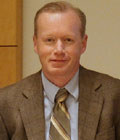 Mike Moran, is author of the acclaimed book on Internet marketing, Do It Wrong Quickly, on the heels of the best-selling Search Engine Marketing, Inc., Mike Moran led many initiatives on IBM’s Web site for eight years, including IBM’s original search marketing strategy. Mike holds an Advanced Certificate in Market Management Practice from the Royal UK Charter Institute of Marketing, and is a Visiting Lecturer at the University of Virginia’s Darden School of Business. He also writes marketing columns for Internet Evolution and Search Engine Guide. Mike frequently keynotes conferences on Internet marketing for marketers, public relations specialists, market researchers, and technologists, and serves as Chief Strategist for Converseon, a leading digital media marketing agency. Prior to joining Converseon, Mike worked for IBM for 30 years, rising to the level of Distinguished Engineer. Mike can be reached through his Web site (mikemoran.com), which is also home to his Biznology newsletter and blog.
Mike Moran, is author of the acclaimed book on Internet marketing, Do It Wrong Quickly, on the heels of the best-selling Search Engine Marketing, Inc., Mike Moran led many initiatives on IBM’s Web site for eight years, including IBM’s original search marketing strategy. Mike holds an Advanced Certificate in Market Management Practice from the Royal UK Charter Institute of Marketing, and is a Visiting Lecturer at the University of Virginia’s Darden School of Business. He also writes marketing columns for Internet Evolution and Search Engine Guide. Mike frequently keynotes conferences on Internet marketing for marketers, public relations specialists, market researchers, and technologists, and serves as Chief Strategist for Converseon, a leading digital media marketing agency. Prior to joining Converseon, Mike worked for IBM for 30 years, rising to the level of Distinguished Engineer. Mike can be reached through his Web site (mikemoran.com), which is also home to his Biznology newsletter and blog.
 Marc Harty is CEO of MainTopic Media, Inc., a strategically focused, values-driven, marketing consultancy and training company. Ever the entrepreneur, Marc has owned an ad agency, a web development firm, and a search marketing firm. A marketing strategist with over two decades of distinguished service, Marc has won over 200 local, national and International awards, including two Clio’s and “Best Of Show” from The Dallas Ad League. Marc speaks regularly on Online PR, Thought Leadership, Social Marketing and Internet Business Transformation. His true passion? Developing proven marketing programs that can help anyone get the visibility and results to successfully manifest their life purpose.
Marc Harty is CEO of MainTopic Media, Inc., a strategically focused, values-driven, marketing consultancy and training company. Ever the entrepreneur, Marc has owned an ad agency, a web development firm, and a search marketing firm. A marketing strategist with over two decades of distinguished service, Marc has won over 200 local, national and International awards, including two Clio’s and “Best Of Show” from The Dallas Ad League. Marc speaks regularly on Online PR, Thought Leadership, Social Marketing and Internet Business Transformation. His true passion? Developing proven marketing programs that can help anyone get the visibility and results to successfully manifest their life purpose.
Stop repeating these 10 proven mistakes when dealing with the media and managing your media relations program!
Ever since outlaw Jesse James wrote and issued the first news release, media relations practitioners have steadfastly refused to learn from the mistakes of their forebears.In James’s case, he didn’t take into account the suspicious and questioning nature of the reading populace, who viewed his bombastic news releases as early American “spin control.”
Learning Topics
Underestimating the intelligence of your audience is just one of the 10 major mistakes covered in this session. Others include:
- Not being a student of the media, keeping up with their changes needs and trends
- Confusing media output numbers with bottom-line outcome measures
- Annoying editors with misdirected and/or badly-prepared materials
- Not routinely evaluating your media relations programs and management
- Trying to substitute media relations for communication
Wilma answers real-world questions on:
- Holding the media accountable and keeping them from allowing bias or half-truths from creeping into news coverage, so that what is reported is straight, honest and fair
- How recent college graduates — with no contacts — can build relationships with the media
- The most effective ways to pitch
- Dealing with a less-than-objective journalist
- The best way to get to know a editor, writer or reporter
- The most important and effective tools in media relations
- The best day/time to pitch stories
- The least offensive way to bring a reporter’s error to his or her attention – and how to ask for a correction
- Pushing the envelope: How persistent you should be in making your pitch
- Teaching senior management the difference between a subjective, self-serving news item and a legitimate, content-rich press release
- Measures practitioners should routinely implement to measure results on the fly – especially during a crisis
- The biggest changes in media relations over the past 10 years
Presented by:
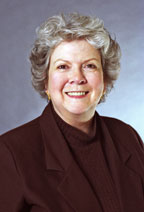 Wilma Mathews, ABC and IABC Fellow, works for Arizona State University as director of constituent relations. She also conducts media relations seminars, provides media training for corporate executives and is co-author of On Deadline: Managing Media Relations (4th edition, Spring 2006). Her background includes corporate communications and international public relations for AT&T/Lucent; nonprofit communication for two chambers of commerce and a medical center; and writing/editing for a newspaper and magazine. A national and international speaker, Wilma also contributes articles to trade publications and lectures on PR and media relations at ASU.
Wilma Mathews, ABC and IABC Fellow, works for Arizona State University as director of constituent relations. She also conducts media relations seminars, provides media training for corporate executives and is co-author of On Deadline: Managing Media Relations (4th edition, Spring 2006). Her background includes corporate communications and international public relations for AT&T/Lucent; nonprofit communication for two chambers of commerce and a medical center; and writing/editing for a newspaper and magazine. A national and international speaker, Wilma also contributes articles to trade publications and lectures on PR and media relations at ASU.
 Get instant access to this webinar replay. Or Subscribe to ASK and access all replays (best value).
Get instant access to this webinar replay. Or Subscribe to ASK and access all replays (best value).
Whether explicit or not, all corporate communication has an underlying goal of persuading an audience to do something, i.e., like you, trust you, embrace a scary change, buy your product or service, etc.
Even if you buy this logic, you probably aren’t yet persuaded that you need to purchase this webinar on moving an audience to action. Why? Because facts and data alone do not convince audiences; they have to desire to act. That’s where rhetoric, the study of understanding, discovering and developing arguments for particular situations, comes in. It behooves all of us in business, especially those in corporate communications, to know and use the essential time-tested secrets for changing an audience’s mood, mind and willingness to act.
Don’t miss this chance to learn from rhetoric expert and author of Thank You For Arguing, Jay Heinrichs, who has been described as a cross between Cicero and David Letterman. During this pithy and entertaining webinar, Jay will teach us the most practical tips and tools to master the art of persuasion, whether when speaking or writing, using sources as diverse as Aristotle, Lincoln and Homer Simpson. Whether you work in marketing, sales, public relations, internal communications or executive leadership, this webinar is for you. Are you persuaded yet?
“The Pivot concept was the best idea. Thanks for putting these together – you offer a valuable product at affordable prices.”
What You Will Learn:
- First, the 3-step strategy for getting the audience the mood and moving it toward action
- Ethos, pathos or logos … which persuades best, when?
- What’s the best medium for your message?
- A simple strategy to get an argument unstuck
- Aristotle’s three traits of credible leadership
- A “tool kit” of rhetorical tactics, from the Pivot to the Reluctant Conclusion
Who Should Attend
This webinar is designed for everyone who would like to win audiences and move them to action by understanding the power of rhetoric. It is especially suitable for:
- Corporate communicators, marketers, adverting execs, HR, sales, writers and editors, teachers, students and politicians.
Presented by:

Think of any great presenter—Steve Jobs, Richard Branson or Jeff Bezos—and it won’t take you long to figure out that they are also master storytellers. Storytelling is increasingly becoming a “must-have” skill for business leaders, but you still won’t find it on any MBA curriculum.
This webinar will give you a deeper understanding why story is such a powerful strategic tool and how it can be used in the business setting. We will show you a specific “before and after” example of how a case study was transformed into powerful case story for pitching new business. We’ll also give you some key tips on how to craft and use stories to make an impact in your next big presentation or business meeting.
“As an ex-newspaper reporter, I have always recognized the value of storytelling. This webinar helped provide a great framework for bringing people into the important strategic and cultural stories I need to be communicating.”
What You Will Learn:
- The neuroscience and psychology that proves why stories work
- Tips for transforming run-of-the-mill presentation content into powerful stories that engage audiences
- How storytelling can be used as strategic tool to build chemistry and trust with others
- How even data-driven presentations can benefit from the art of storytelling
- The difference between conventional storytelling and strategic storytelling for business purposes. Please bring your ideas and questions!
Who Should Attend
This webinar is primarily aimed at those in the early stages of implementing or learning about strategic business storytelling, although it will also help more advanced practioners to focus their efforts. It is especially suitable for:
- Small and mid-sized business leaders
- Corporate executives who are new to storytelling
Presented by:
 Jane Praeger is a former documentary filmmaker and faculty member in Columbia University’s M.S. program in Strategic Communications and Communications Practice where she teaches presentation design and delivery, communications strategy, strategic storytelling and writing. She founded Ovid Inc. in 1992 to help people find their public voices. Since then, she has provided speech, presentation, media training and customized workshops, to corporations such as Nickelodeon, Coach, Estee Lauder, McKinsey & Company, Euro RSCG Worldwide, as well as other technology, entertainment, and consulting firms. On the non-profit side, she has worked with Open Society Foundations, Doctors Without Borders, Atlantic Philanthropies, The Ms. Foundation, Harvard University, Columbia University Business School, and many others.
Jane Praeger is a former documentary filmmaker and faculty member in Columbia University’s M.S. program in Strategic Communications and Communications Practice where she teaches presentation design and delivery, communications strategy, strategic storytelling and writing. She founded Ovid Inc. in 1992 to help people find their public voices. Since then, she has provided speech, presentation, media training and customized workshops, to corporations such as Nickelodeon, Coach, Estee Lauder, McKinsey & Company, Euro RSCG Worldwide, as well as other technology, entertainment, and consulting firms. On the non-profit side, she has worked with Open Society Foundations, Doctors Without Borders, Atlantic Philanthropies, The Ms. Foundation, Harvard University, Columbia University Business School, and many others.
 Heather Thomas is a business builder who has clocked countless hours performing “on stage” in the presentation spotlight. She earned her stripes in the agency world, working at Agency.com, Modem Media and the digital agency Critical Mass where she built their Business Development and Corporate Marketing practice from the ground up, ultimately tripling their revenue. After crafting hundreds of high-stakes presentations to win clients such as Procter & Gamble, NASA and Dell, Heather joined Ovid in 2010 to pass what she learned about persuasive presentations to others. In addition to her work with Ovid, Heather runs Winsome, a business development consulting boutique. She is also an adjunct instructor at Columbia University where she teaches Masters students the art of strategic storytelling. Heather is a cum laude graduate of Princeton University.
Heather Thomas is a business builder who has clocked countless hours performing “on stage” in the presentation spotlight. She earned her stripes in the agency world, working at Agency.com, Modem Media and the digital agency Critical Mass where she built their Business Development and Corporate Marketing practice from the ground up, ultimately tripling their revenue. After crafting hundreds of high-stakes presentations to win clients such as Procter & Gamble, NASA and Dell, Heather joined Ovid in 2010 to pass what she learned about persuasive presentations to others. In addition to her work with Ovid, Heather runs Winsome, a business development consulting boutique. She is also an adjunct instructor at Columbia University where she teaches Masters students the art of strategic storytelling. Heather is a cum laude graduate of Princeton University.
Email is now so embedded into our daily lives that we think nothing of it. We need to, however, because the Internet’s original “killer app” is starting to kill employee productivity and focus. Consider these findings:
- The average business executive spends two hours a day on e-mail
- 70% of employees react to emails within 6 seconds of them arriving
- The number of e-mail messages sent is rising dramatically — by some estimates, by more than 20% a year
- Almost one in five emails was copied unnecessarily to staff members other than the main recipient
- The use – and, particularly, the misuse – of email costs businesses up to $16,000 per employee per year
This webinar is aimed at arming attendees with the insight and ideas to help them get a lot smarter about using email, for themselves and their organizations. Don’t miss this rare chance to learn the latest thinking and best practices from two of the foremost global experts on this topic.
What you will learn:
- The state of workplace email today, and why communication professionals need to get activated in the battle
- Why this problem is so hard to solve, and what you must do to overcome the hurdles
- How to develop a centralized strategy to minimize internal communication emails
- How to launch an effective email etiquette program that will make everyone in your organization happier about their inbox.
- Tools, tips and tricks to outsmart your inbox
“I learned that the biggest levers we can pull to change our email situation are behavior based, not technology based.”
“I didn’t realize how much research exists on this topic.”
Who should attend
Anyone who would like to learn how to better conquer their daily email war, and help their organization feel less pain and angst from their inbox. This webinar is especially suitable for professionals in the areas of internal communications, marketing and public relations.
Presented by:
 David Grossman, ABC, APR, Fellow PRSA, is both a teacher and student of effective communication. He is one of America’s foremost authorities on communication and leadership inside organizations. A much sought-after consultant and speaker, David is often quoted in media, providing expert commentary and analysis on employee and leadership issues. Most recently, he was featured on “NBC Nightly News” about e-mail overload, and in the Chicago Tribune. David is Founder and CEO of The Grossman Group, an award-winning Chicago-based communications consultancy focused on organizational consulting, strategic leadership development and internal communications. His most recent books are You Can’t NOT Communicate: Proven Solutions That Power the Fortune 100, (now in its second edition), and its follow up You Can’t NOT Communicate 2: More Proven Solutions That Power the Fortune 100.
David Grossman, ABC, APR, Fellow PRSA, is both a teacher and student of effective communication. He is one of America’s foremost authorities on communication and leadership inside organizations. A much sought-after consultant and speaker, David is often quoted in media, providing expert commentary and analysis on employee and leadership issues. Most recently, he was featured on “NBC Nightly News” about e-mail overload, and in the Chicago Tribune. David is Founder and CEO of The Grossman Group, an award-winning Chicago-based communications consultancy focused on organizational consulting, strategic leadership development and internal communications. His most recent books are You Can’t NOT Communicate: Proven Solutions That Power the Fortune 100, (now in its second edition), and its follow up You Can’t NOT Communicate 2: More Proven Solutions That Power the Fortune 100.
 Nathan Zeldes is an independent organizational consultant, a role he has adopted in 2009 after a 26 year career at Intel corporation. A physicist morphed into an organizational change agent, Nathan is recognized as a global thought leader in the search for improved knowledge worker productivity. Having enjoyed a long career as a manager and principal IT engineer at Intel, he now helps organizations to solve core problems at the intersection of technology and human behavior. His experience includes initiating and leading optimal corporate technology adoptions in the domains of Information Technology, Internet applications, Innovation Management, Remote and Distributed work, and Knowledge Management. A key component in Nathan’s work is mitigating the problem of email and information overload which is harming the productivity and quality of life of Knowledge Workers everywhere. He had identified the problem 17 years ago, and since then he’s developed and deployed original solutions at Intel and other companies, and has founded the Information Overload Research Group to further its study. He is also active at present in the areas of Social Media adoption, Technical Leadership development, and the multi-generational workplace of the future. Nathan’s blog is Challenge Information Overload.
Nathan Zeldes is an independent organizational consultant, a role he has adopted in 2009 after a 26 year career at Intel corporation. A physicist morphed into an organizational change agent, Nathan is recognized as a global thought leader in the search for improved knowledge worker productivity. Having enjoyed a long career as a manager and principal IT engineer at Intel, he now helps organizations to solve core problems at the intersection of technology and human behavior. His experience includes initiating and leading optimal corporate technology adoptions in the domains of Information Technology, Internet applications, Innovation Management, Remote and Distributed work, and Knowledge Management. A key component in Nathan’s work is mitigating the problem of email and information overload which is harming the productivity and quality of life of Knowledge Workers everywhere. He had identified the problem 17 years ago, and since then he’s developed and deployed original solutions at Intel and other companies, and has founded the Information Overload Research Group to further its study. He is also active at present in the areas of Social Media adoption, Technical Leadership development, and the multi-generational workplace of the future. Nathan’s blog is Challenge Information Overload.
No one has to tell you what a great speech is, right? You know one when you hear it.
Well you’re about to hear a bunch of them—and you’re going to learn from them, guaranteed.
Vital Speeches of the Day editor David Murray presents “Speechwriting Jam Session 2010,” 75 entertaining, inspirational and instructive minutes that will have the hair standing up on the same arm you’re scribbling notes with. We’ll discuss, even debate, what makes these great speeches great.
Through dramatic readings from winners of the 2010 Cicero Speechwriting Awards and highlight reels from the Vital Speeches YouTube site, Murray will help us reawaken the giants within us by sharing together excerpts from speeches contemporary and classic, famous and rare. (In the true spirit of an improvisational jam session, you’ll even have a chance to nominate some of your own YouTube favorites, so come prepared!)
You’ll come away from this session with:
• Concrete examples showing how leaders are addressing the issues of this particular moment in business, politics and society.
• A stockpile of examples—video and text—to show reticent speakers: rhetorical tactics that have passed the test and been pulled off by the best.
• Renewed enthusiasm and an expanded sense of what’s possible in leadership communication.
• And a goose bumps, guaranteed.
SESSION LEADER:
- David Murray writes and speaks about communication—business, political and personal. He’s editor of Vital Speeches of the Day, a monthly collection of the best speeches in the world. He writes about sports, people, politics and travel for magazines, newspapers and websites. publications and websites. And he discusses the communication life at his popular personal blog, Writing Boots.http://www.vsotd.comhttp://writingboots.typepad.com/writing_boots/profiles/http://writingboots.typepad.com/
 When the exec or the client is stuck on newsletters, cool new technologies, or sending e-mails and memos, get them refocused on strategy. Quit being an order taker, and start doling out more value to your execs and clients by using questions and a little psychology to drive strategic thinking. Now more than ever communicators must be courageous and add value. Tight Q&A, skilled facilitation approaches and more enable the communicator.
When the exec or the client is stuck on newsletters, cool new technologies, or sending e-mails and memos, get them refocused on strategy. Quit being an order taker, and start doling out more value to your execs and clients by using questions and a little psychology to drive strategic thinking. Now more than ever communicators must be courageous and add value. Tight Q&A, skilled facilitation approaches and more enable the communicator.
What You Will Learn:
- Use questions effectively to drive strategic thinking
- Enable client or exec “discovery” of the right approach
- Use planning and flexible facilitation to create planning meeting that achieve goals and bring ‘em back for more impact
Questions that will be answered
- How do I tell my exec their idea is a bad one?
- How do I get my client refocused on the right stuff?
- What do I do when my exec high-jacks my planning meeting?
- What do I do when we stray off agenda at a strategic planning session?
Presented by:
 Stacy Wilson, ABC, is president of Eloquor Consulting, Inc., in Lakewood, Colorado. Stacy has more than 22 years of experience and has been completely focused on internal communication and organizational development since the mid 90’s. Her firm helps organizations communicate more effectively with employees, using internal communication as a lever to positively impact the bottom line.
Stacy Wilson, ABC, is president of Eloquor Consulting, Inc., in Lakewood, Colorado. Stacy has more than 22 years of experience and has been completely focused on internal communication and organizational development since the mid 90’s. Her firm helps organizations communicate more effectively with employees, using internal communication as a lever to positively impact the bottom line.
Eloquor serves a broad array of industries with a full complement of internal communication services. Stacy and her team primarily focus on: Intranet, portal and social technology governance and usability; Change communication; Strategic internal and HR communication; Internal brand integration; Leader communication training and other OD assignments.
The firm’s sweet spots are technology-related assignments, such as portal governance and usability, and change communication, such as major systems changes. Clients include ConocoPhillips, MTS Systems, Tyco Electronics, IHS, the IRS, a Fortune 35 healthcare company, a Fortune 150 defense contractor and a Fortune 50 financial services company. Stacy is a past IABC international board member and recently chaired the 2008 IABC Southern Region Conference. She is also a member of the Council of Communication Management and the Society of HR Management.
At Cisco, they’ve changed the way they use words. It’s saving them money and helping them work together better. It’s connecting the internal culture to the business in deeper, more meaningful ways. And that’s helping them serve customers better and sell more.
In this session, Mark Buchanan, program lead for Cisco’s brand language initiative, paints a picture of how Cisco is changing the way 75,000 employees are using words across a $130 Billion business. He’ll walk you through how the brand language team set the plan in motion and made lasting changes. He’ll include practical tips and share insights, successes, and challenges. And he’ll give you his thoughts about how the lessons from Cisco can make a difference for your business.
The session includes:
- Evaluating the opportunity
- Aligning your voice with your business
- Connecting with your audience
- Scaling the program
- Making it stick
Presented by:
 Mark Buchanan is the program lead for brand language at Cisco. He’s helping the company use language that is simpler and more distinctive. And he’s helping bring empathy back to a technology company that has always cared about people, but has found those values challenged by rapid growth and increasingly complex technology. He’s worked with Sales, Marketing, Engineering, Services and Corporate Communications and has seen impressive results across every function. Together, Mark and the people at Cisco are changing the culture of language and communications, around the world for 75,000 employees, 50,000 contractors and vendors, across a $130 billion business.
Mark Buchanan is the program lead for brand language at Cisco. He’s helping the company use language that is simpler and more distinctive. And he’s helping bring empathy back to a technology company that has always cared about people, but has found those values challenged by rapid growth and increasingly complex technology. He’s worked with Sales, Marketing, Engineering, Services and Corporate Communications and has seen impressive results across every function. Together, Mark and the people at Cisco are changing the culture of language and communications, around the world for 75,000 employees, 50,000 contractors and vendors, across a $130 billion business.



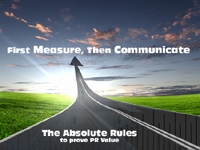

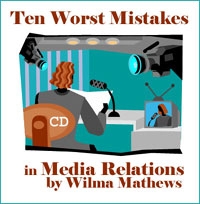



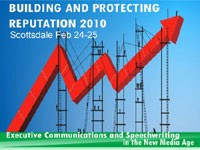
 David Murray
David Murray
